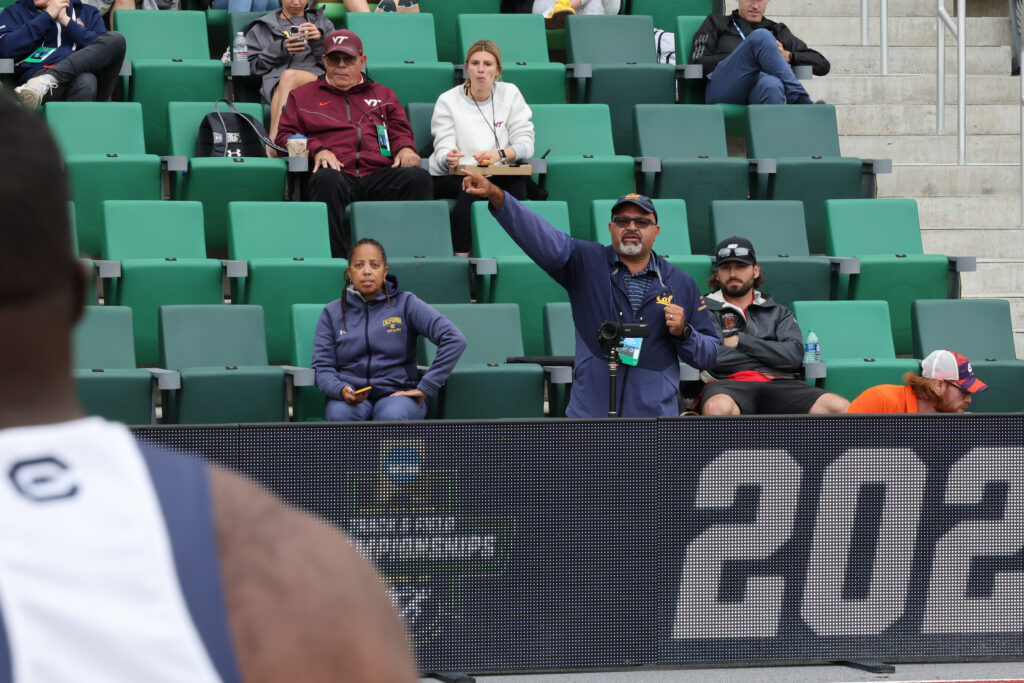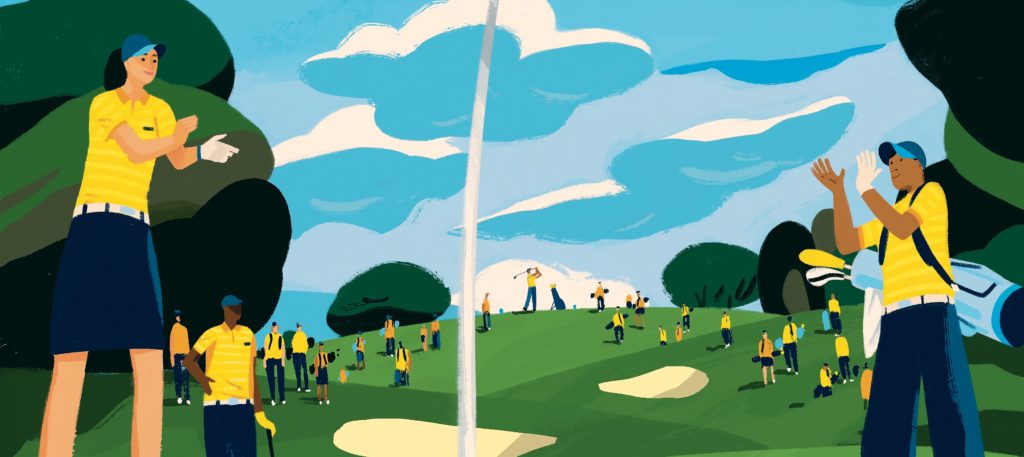Their hairlines weren’t much thinner; their waistlines weren’t much thicker; and, with few exceptions, it was hard to tell from their appearance that 55 years had passed since these men won Cal’s only NCAA basketball championship in 1959.
They returned last May for a joyous two-day reunion in Berkeley: a banquet at the Lafayette Park Hotel, followed by lunch at Haas Pavilion the next day. Not coincidentally, the menu was high on veggies and low on sugar.
“They really take care of themselves, and it shows,” said Rene Herrerias, the closest thing they have to a father figure since the death of their beloved head coach, Pete Newell, in 2008. Herreias was Pete’s assistant coach and successor.
“We started having these reunions right after we stopped playing,” added guard Denny Fitzpatrick ’59. “Everybody came, and it all goes back to Pete.” Back in those days, there were 25 people in practice, not just the 12 stars of the basketball team, and all were equally important to Pete. “So when we have reunions, we don’t have 12 guys show up; we have 20 more who never got in the game, including student managers and trainers. They’re part of the team, too.”
“I’ve been around a lot of teams, and this group is the most special I’ve ever seen,” Herrerias observed. “They help each other out. They don’t ask questions, they just do it.”
They have been holding reunions like clockwork every five years, “although we’re probably going to start holding them more often now that we’re getting older,” said business manager George Hill ’59.
Much of the conversation at the reunion was about Newell, whom every man on the team considers the best coach ever, and by a wide margin.
“Everything good you’ve ever heard about him is true,” said Fitzpatrick. “We all felt lucky to have him because he should have been doing something much more important than coaching, like being a Senator. I named my son after him: Peter Francis Fitzpatrick. And I’ve told him all about Pete.”
“He was so much more than a coach,” said forward/center Stan Morrison ’61. “That has always bothered me—not being able to mine the words that pay the tribute that so many of us feel in our hearts. When you have someone so incredible, who has had such a dramatic impact on your life, paying tribute is impossible.”
At the banquet a lively debate broke out: Was Newell a coach or a teacher? Finally, Karen Shultz (wife of guard Earl Shultz ’61) stopped the discussion. “She said, ‘He was a teacher first,’ and no one could argue with that,” said Bob Dalton ’59.
But even more than basketball, he taught them about life.
“In those days, if you were not doing well in class you got a ‘cinch notice,’” said Ned Averbuck ’61, “meaning that you were a cinch to get a D or an F in class if you kept up with what you were doing.” Averbuck got three cinches out of five classes his sophomore year. He was playing the best basketball of his life, but that wasn’t good enough for Pete. “He said, ‘The way you act in the classroom is emblematic of the way you play on the court. You save things up and go in a burst. That’s not the way we play. You have to do your best all the time. If you haven’t learned that, I haven’t done my job.
“But the worst part is that you’re making me a liar to your parents. I promised them you would get a world-class education, and I’m not delivering on that.’
“I said, ‘Pete, I promise to get good grades.’ And he said, ‘It’s not just grades; you have to get something out of each class. I don’t want promises; I want action.’”
And he got it. Averbuck went on to become an educator himself.
Darrall Imhoff, the team’s star center, recalled the time he scored 28 points against a strong Iowa team, giving him what he calls “a bad case of helium head.” The next game he was ice cold, and Newell sent in a sub.
“As I was coming off the court I said, ‘I’m not getting any help out there.’ I got ‘The Pete Look,’ and I knew I was in deep doo-doo. In the locker room at halftime he said, ‘Some players have a harder time having a good game than having a bad game,’ and I knew he was talking about me. I had lost perspective. I apologized to each of my teammates, and I never had a problem with helium head again.”
Newell wasn’t too bad at the X’s and O’s, either.
“There was only one way to pass to the center,” said Fitzpatrick. “No bounce pass, no sidearm pass. You pass with two hands over your head and deliver it to him over his head where he can do something with it. Who thinks of stuff like that? Nobody but Pete.”
“In fact, no bounce passes were allowed at all, unless it was a cutter passing to another cutter,” added Averbuck. “We had a passing drill up and down the court with the ball never touching the floor. Joe Kapp ’59, who played guard on our team, taught it to his players when he coached the football team in the ’80s, and that was the origin of ‘The Play’ against Stanford in the 1982 Big Game.”
“He didn’t give a damn about money,” said Schultz. “All he thought about were games and how he’d counteract a defense.”
Plus, they had a secret weapon: Herrerias. He rarely saw them play a game because he was usually out of town scouting the next week’s opponents.
“Rene was a master at watching everything and writing it down,” said Morrison. “He’d sit in the stands with his notebook on his lap and diagram both their offense and defense. The tiniest details never escaped him.
“Then he’d come back and teach it to us scrubs (a.k.a. the Blues, a.k.a. the Canon Fodder Five) on Monday and Tuesday, and we’d run their offense and defense against our varsity on Wednesday and Thursday.
“Those poor guys had no chance because we knew their plays better than they did,” Morrison said. “Many times, one of our guys would tell the man he was guarding, ‘Hey, you shouldn’t be standing here; you should be standing over there.’ Their guys would do double-takes, and our guys would be in hysterics.”
“When we went out to play a game, we felt we were unbeatable, and we pretty much were,” said Fitzpatrick. “It wasn’t because we were such great players; it was because Pete had such a great system and knew how to teach it, and Rene was such a great scout.”
“Pete was a great, great teacher,” Hill agreed, “and Rene wrote the Cliff Notes.”
“The beauty of it was that nobody was bigger than the team, not even Pete,” said Averbuck. “Although as we got older, we came to admire him and Rene even more.”
So how many of them graduated? All but one: Darrall Imhoff. He finished his senior year a couple of units short because he had to play on the 1960 U.S. Olympic team (which Newell coached, making him one of only three coaches to win the NIT, NCAA, and the Olympic gold medal). Then came a 12-year NBA career that would have been even longer but for injuries.
But he knew how much it meant to his old coach, so he came back to Cal and got his B.A. in 1995. His teammates threw him a big party at his old fraternity house, Phi Kappa Tau, to celebrate. (He now identifies himself as Class of ’60/’95.)
The headline in the Daily Cal the next day: “Darrall Imhoff finally gets his degree—for Pete’s sake.”
Reach Martin Snapp at catman@sunset.net.






















